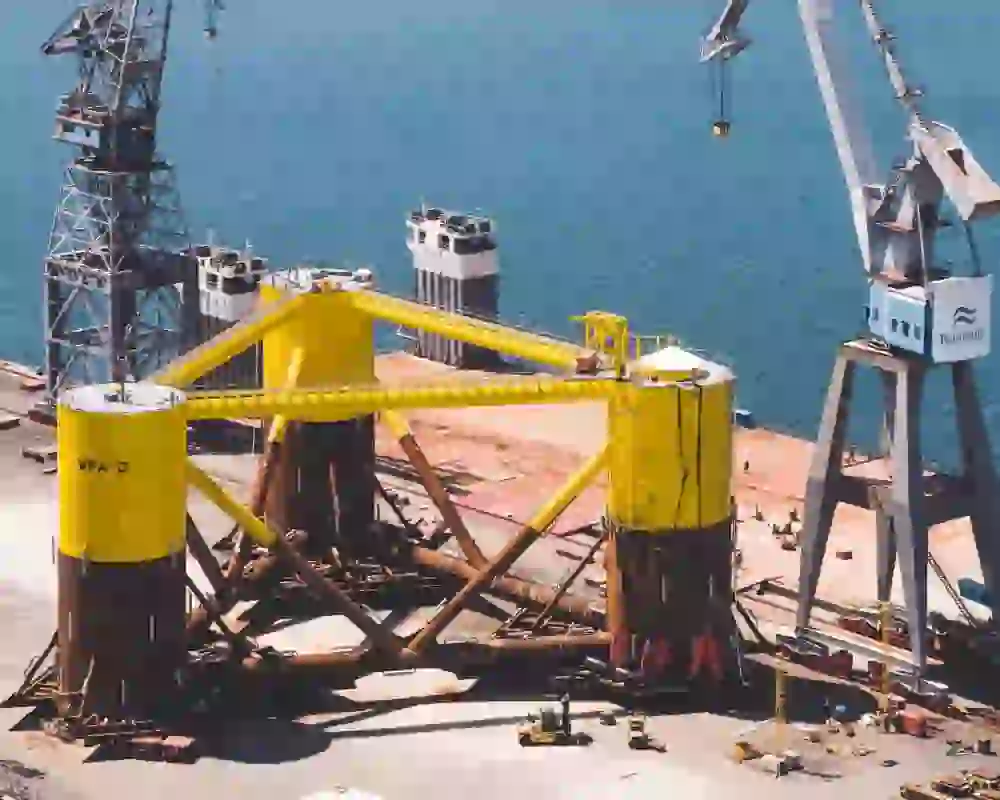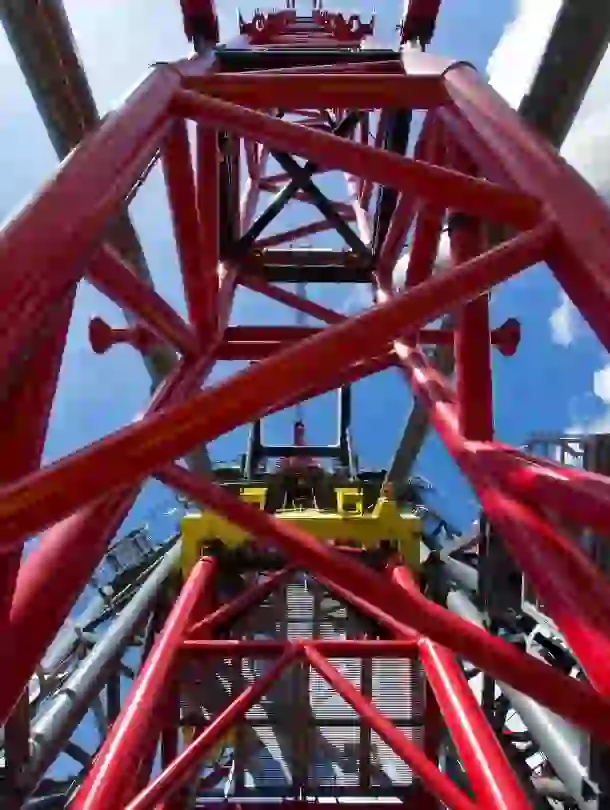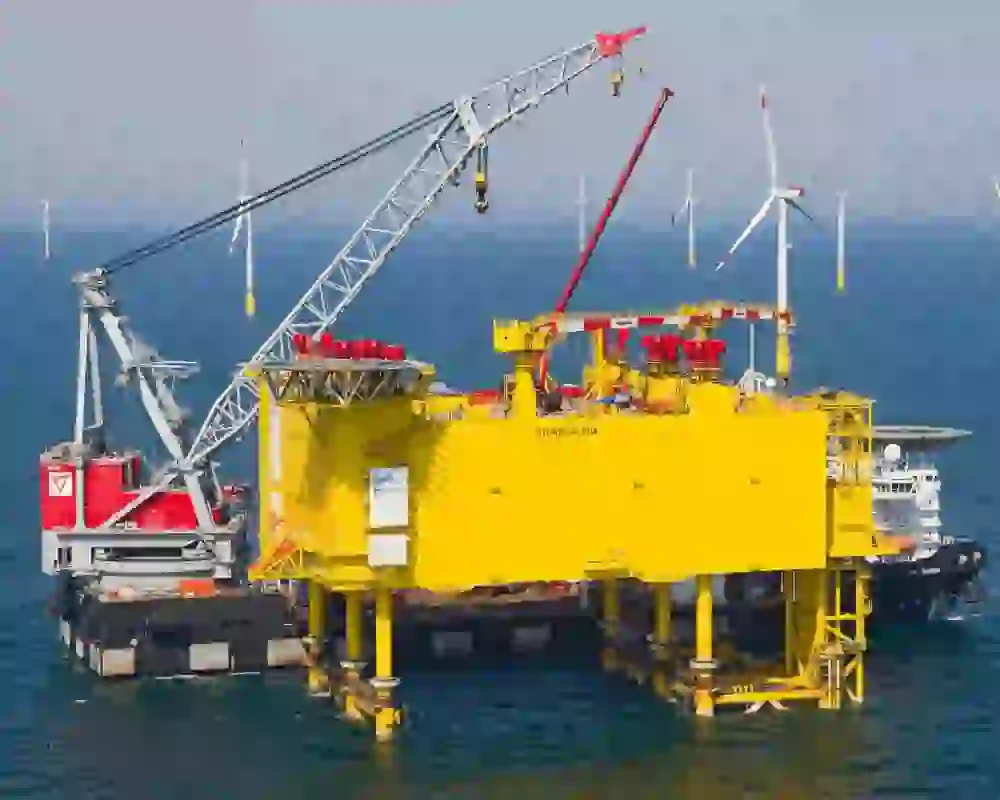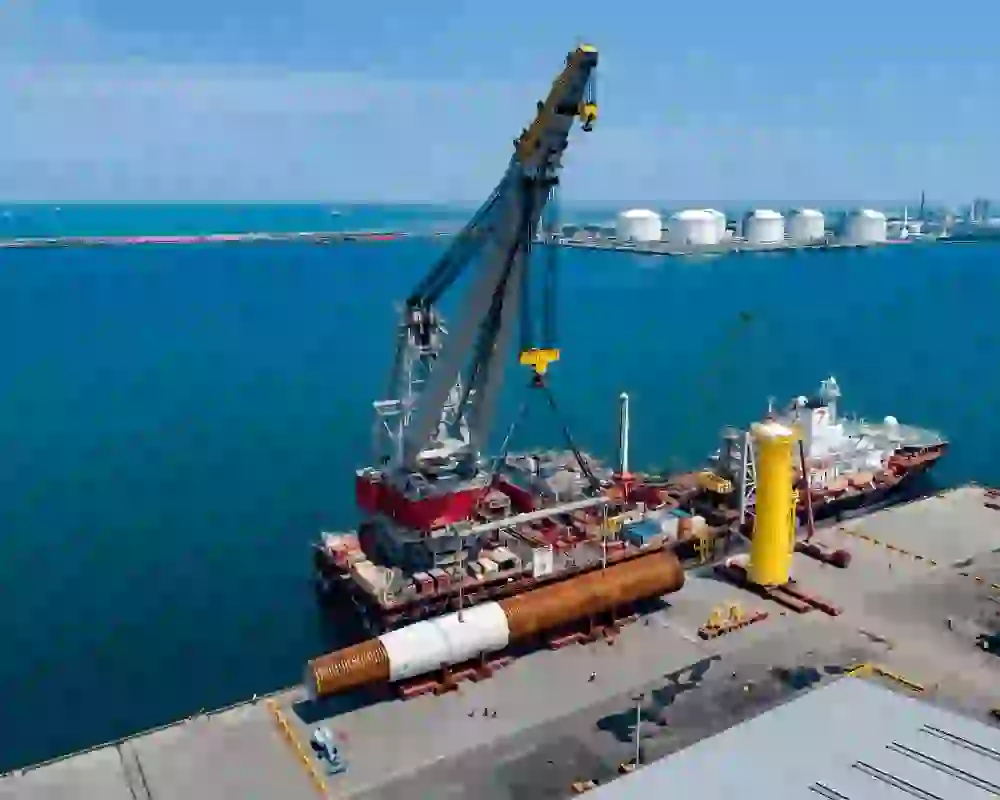
Sector:
Offshore Wind
Expertise:
Heavy transport
Load-in & load-out
Benefits:
Reduced preparation
Optimized schedule
Parallel operations
Location:
Portugal
The WindFloat Atlantic project is the first floating wind farm in continental Europe and is generating a capacity of 25MW; equivalent to the energy consumed by 60,000 homes in a year.
It is installed 20km offshore Portugal and features three MHI Vestas 8.4 MW turbines. Mammoet was chosen by its customer Coordinatora to undertake several scopes for this project, due to its expertise in performing complex maneuvers to tight deadlines.
The first phase of its scope saw Mammoet transporting six specialist offshore wind columns, weighing 700t-900t, at a shipyard in Setubal, Portugal. The columns, which would be joined together in groups of three to form a complete floating foundation, needed to be transported 800m from a fabrication area to a dry dock for assembly.
Despite the varied weights of these columns, Mammoet’s engineering team was able to design a solution that meant each column could be transported using the same SPMT configuration. This saved time during the maneuvers, as the 44 axle lines of SPMT did not have to be reconfigured for each transportation.
Mammoet precisely maneuvered every offshore wind column into the dry dock, ensuring each was adjusted into its assembly position within tolerances of only 10mm. The route included two 90° turns and a slope with a gradient of 2%. In combination with the experience of their skilled SPMT team, Mammoet was able to reduce the total schedule for the maneuvers. The entire operation was originally due to be carried out over 12 days but Mammoet’s flexibility helped the project to be completed in just 10 days.
Moreover, Mammoet was able to make the customer’s overall project more efficient, as the configuration and positioning of the SPMTs ensured that the temporary support structures under the columns could be kept in place. This enabled the customer to proceed directly to fully assembling the columns once they had been delivered to the dry dock.
Later during the project, Mammoet loaded out one of the completed floating foundations. Construction and assembly of the over 2,000t structure had taken place as planned at the Navantia-Fene shipyard. Transportation was then required over a distance of several hundred meters to the quayside, and ultimately onto the heavy lift vessel Fjord.
Several factors made this project particularly challenging. The load-out operation was defined as class one, meaning strict time limits were in place. Also, the operation was performed transversally, bringing obvious space limitations. The sheer size of the structure was also a factor, at 30m tall and with a distance of 50m between each of its three columns.
To perform the load-out, Mammoet installed 236 axle lines of SPMT underneath the three corners of the structure, taking care to synchronize their movements to a high degree of accuracy. Three groups of 54m ramps were also installed between the quay and the deck of the Fjord, allowing the ro-ro operation to take place. The structure was then towed to a position approximately 20km off the coast of Viana de Castelo, where it was installed. It has since been joined by three similar structures.
This is a landmark project, involving the raising of the largest floating wind turbine on the planet. It is also allowing wind farms to move into deeper waters farther from the coast, where winds are stronger and more reliable than closer to shore.




